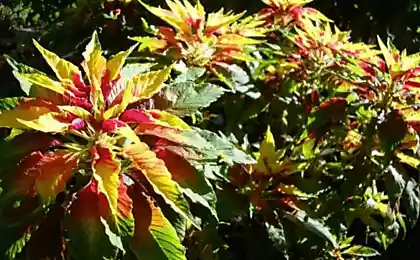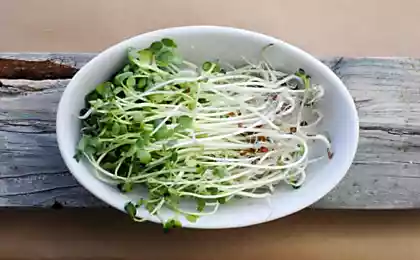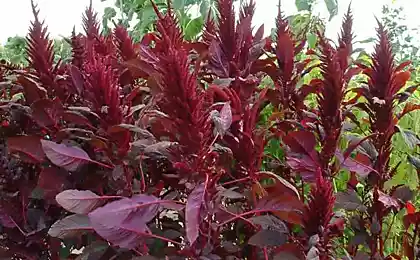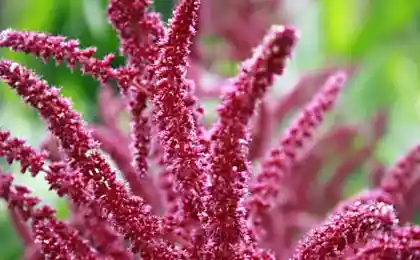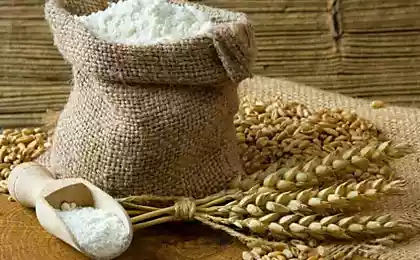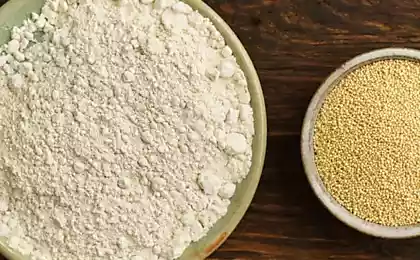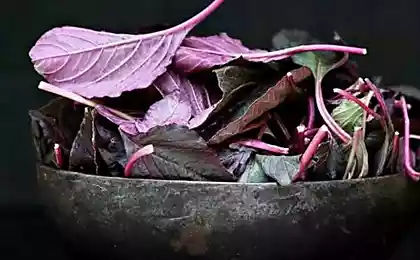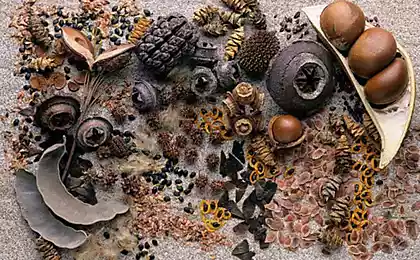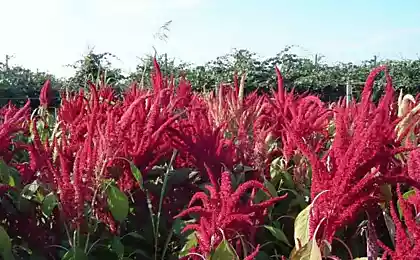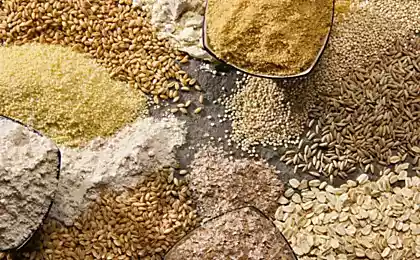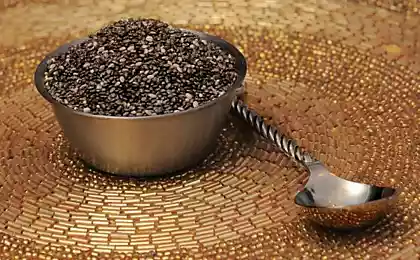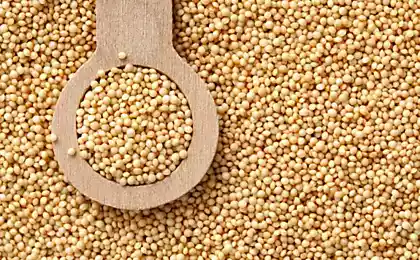322
Why is amaranth called “the real bread of the Slavs”?
Amaranth, shchiritsa, velvet, axamite, fox tail - the bright inflorescences of this plant are difficult to confuse with something. Scientists distinguish between more than 60 species of amaranth, some of which are more familiar to us as weeds. But the seeds, leaves and amaranth oil are full of hidden surprises.
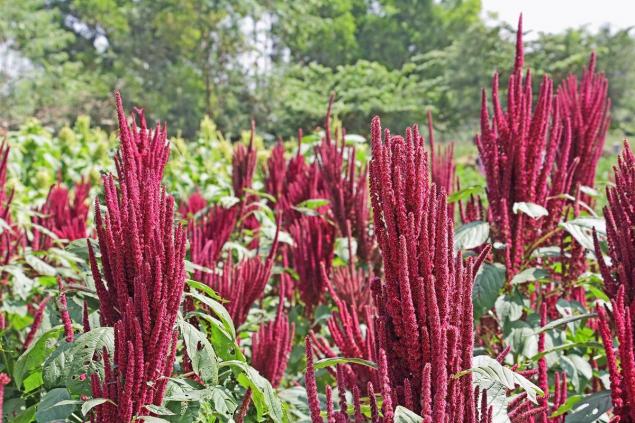
Grains contain up to 18% protein, which is more than many other plant crops. In addition, amaranth protein is easily digested and rich in a number of essential amino acids. Therefore, it makes sense to get acquainted with this superfood.
The history of Amaranth in Greek means “unfading”. The native land of the plant is considered to be Central America, the inhabitants of which began to cultivate it about 8 thousand years ago. Amaranth became for the aborigines of America, who did not know wheat, the basis of flour and bread.
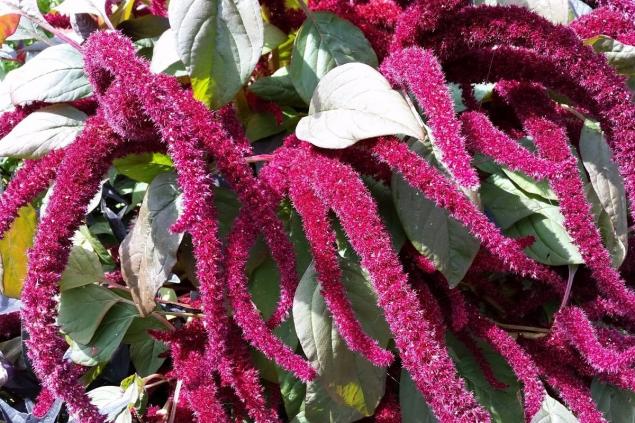
It is not known for certain whether amaranth was “the real bread of the Slavs” and whether Peter I forbade it to grow, as conspiracy theorists sometimes claim. But in Europe, the “bread of the Incas” definitely got only in the middle of the XVI century on the galleons of the Spanish conquistadors. It was originally used as a decorative plant.
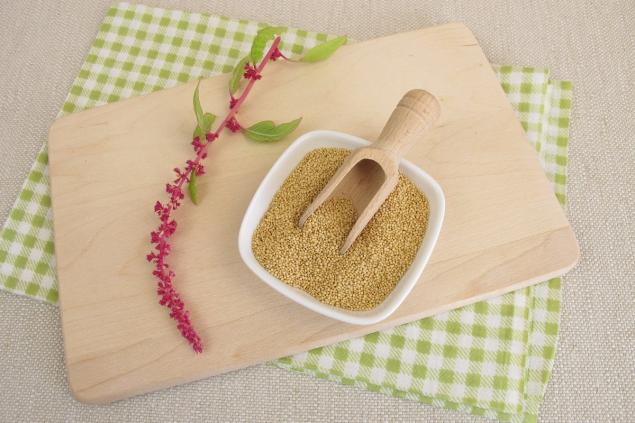
In our country, amaranth as a fodder culture was studied in the 30-50s, but it did not go beyond experienced plots. At the beginning of the XX century, its valuable nutritional properties again interested scientists. Amaranth showed such high characteristics that the UN expert commission on food included it in the list of major food crops of the XXI century.
Food uses seeds, leaves and stems of amaranth, as well as its inflorescences. The leaves, which taste similar to spinach, are rich in vitamin C, carotene, flavonoids and minerals. They can be added to salads, soups, omelets and casseroles. Dried and ground into powder, they are used as a seasoning for meat and fish dishes.
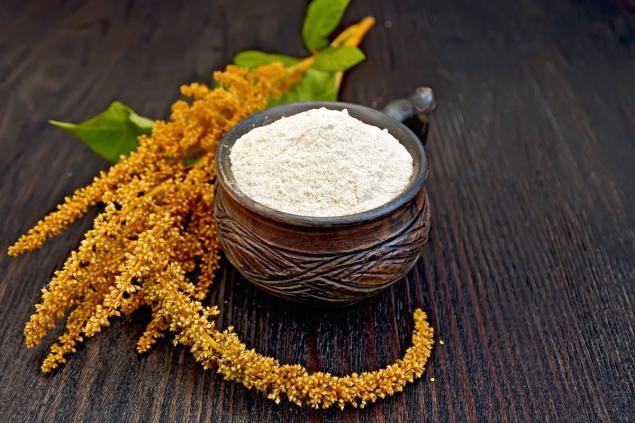
In salads, leaves and grains of amaranth are well combined with green onions, parsley, dill. Amaranth stew is delicious. To do this, crushed leaves of amaranth need to be salted, peppered, watered with vegetable oil and tomato sauce, and then stewed on low heat for 20 minutes.
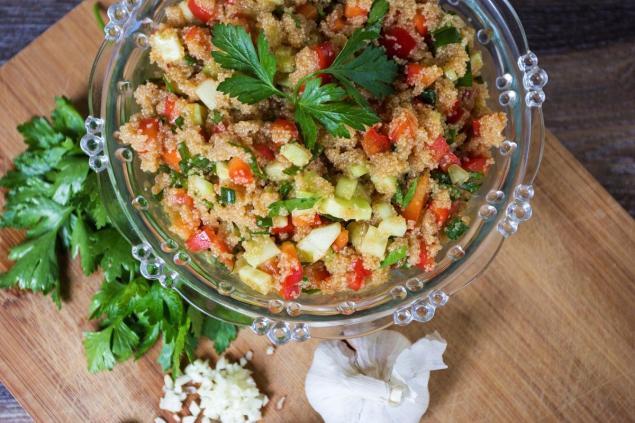 57
57
Amaranth tea is a natural source of vitamins A, C, E and important trace elements - magnesium, iron and calcium. In order to make a useful infusion, you will need the leaves of the plant.
They need to be collected and dried, and you can prepare a drink in a thermos. The taste is sweet, a little tart. Regular intake of such tea has a positive effect on digestion and is indicated for people who suffer from insomnia.
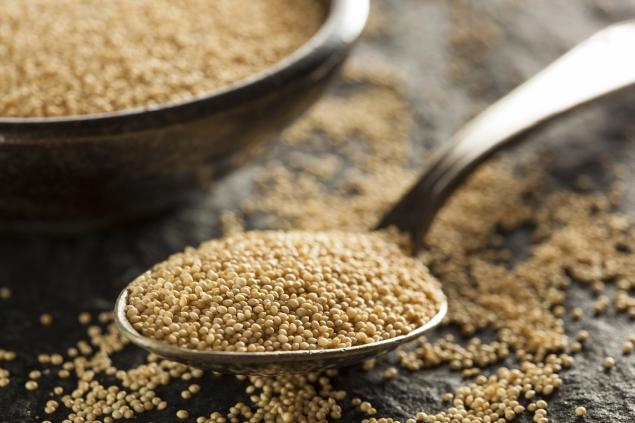
The chemical composition of amaranth seeds is much similar to the chemical composition of buckwheat seeds, but the protein content in it is higher by 6–7%.

Amaranth flour has a more balanced (compared to wheat) composition. It makes sense to add it to the bread. According to scientists, this allows to reduce 1.5-2 times the deficit of essential amino acids.
In addition, amaranth does not contain gluten. Therefore, flour, bread and other dishes based on it can serve as a safe alternative for people suffering from celiac disease (gluten intolerance).
Amaranth oil is a source of squalene, the most powerful antioxidant. This is based on its ability to restore the skin and heal wounds. More squalene in nature contains only subcutaneous shark oil.

Rich in squalene, vitamin E and tocopherol, amaranth oil is widely used in medicine and the cosmetic industry. The ideal area of its use is sluggish, tired, lost elasticity and elasticity skin.
The easiest way to apply: apply a drop of amaranth oil to cleaned and hydrolate-hydrated skin and carefully distribute. After a few minutes, wet the skin with a napkin. Use amaranth oil instead of night cream no more than 2-3 times a week.
Amaranth juice and grated greens can be used as a lotion, face mask or hair balm. Biologically active substances act beneficially on the skin, rejuvenate, give hair shine and elasticity. That's what he is, a weed...

Grains contain up to 18% protein, which is more than many other plant crops. In addition, amaranth protein is easily digested and rich in a number of essential amino acids. Therefore, it makes sense to get acquainted with this superfood.
The history of Amaranth in Greek means “unfading”. The native land of the plant is considered to be Central America, the inhabitants of which began to cultivate it about 8 thousand years ago. Amaranth became for the aborigines of America, who did not know wheat, the basis of flour and bread.

It is not known for certain whether amaranth was “the real bread of the Slavs” and whether Peter I forbade it to grow, as conspiracy theorists sometimes claim. But in Europe, the “bread of the Incas” definitely got only in the middle of the XVI century on the galleons of the Spanish conquistadors. It was originally used as a decorative plant.

In our country, amaranth as a fodder culture was studied in the 30-50s, but it did not go beyond experienced plots. At the beginning of the XX century, its valuable nutritional properties again interested scientists. Amaranth showed such high characteristics that the UN expert commission on food included it in the list of major food crops of the XXI century.
Food uses seeds, leaves and stems of amaranth, as well as its inflorescences. The leaves, which taste similar to spinach, are rich in vitamin C, carotene, flavonoids and minerals. They can be added to salads, soups, omelets and casseroles. Dried and ground into powder, they are used as a seasoning for meat and fish dishes.

In salads, leaves and grains of amaranth are well combined with green onions, parsley, dill. Amaranth stew is delicious. To do this, crushed leaves of amaranth need to be salted, peppered, watered with vegetable oil and tomato sauce, and then stewed on low heat for 20 minutes.
 57
57Amaranth tea is a natural source of vitamins A, C, E and important trace elements - magnesium, iron and calcium. In order to make a useful infusion, you will need the leaves of the plant.
They need to be collected and dried, and you can prepare a drink in a thermos. The taste is sweet, a little tart. Regular intake of such tea has a positive effect on digestion and is indicated for people who suffer from insomnia.

The chemical composition of amaranth seeds is much similar to the chemical composition of buckwheat seeds, but the protein content in it is higher by 6–7%.

Amaranth flour has a more balanced (compared to wheat) composition. It makes sense to add it to the bread. According to scientists, this allows to reduce 1.5-2 times the deficit of essential amino acids.
In addition, amaranth does not contain gluten. Therefore, flour, bread and other dishes based on it can serve as a safe alternative for people suffering from celiac disease (gluten intolerance).
Amaranth oil is a source of squalene, the most powerful antioxidant. This is based on its ability to restore the skin and heal wounds. More squalene in nature contains only subcutaneous shark oil.

Rich in squalene, vitamin E and tocopherol, amaranth oil is widely used in medicine and the cosmetic industry. The ideal area of its use is sluggish, tired, lost elasticity and elasticity skin.
The easiest way to apply: apply a drop of amaranth oil to cleaned and hydrolate-hydrated skin and carefully distribute. After a few minutes, wet the skin with a napkin. Use amaranth oil instead of night cream no more than 2-3 times a week.
Amaranth juice and grated greens can be used as a lotion, face mask or hair balm. Biologically active substances act beneficially on the skin, rejuvenate, give hair shine and elasticity. That's what he is, a weed...
